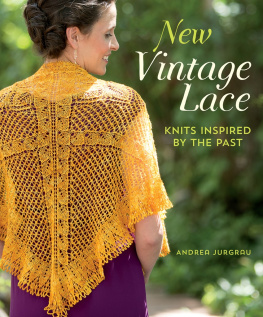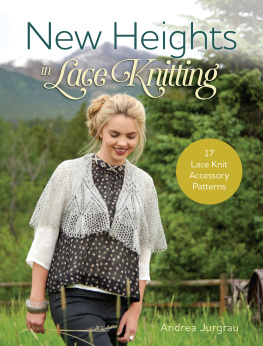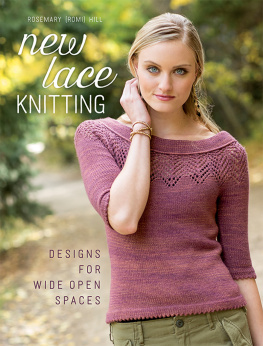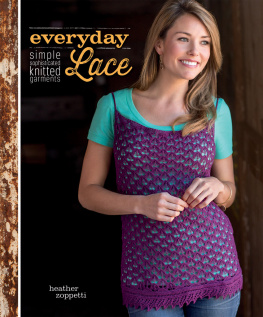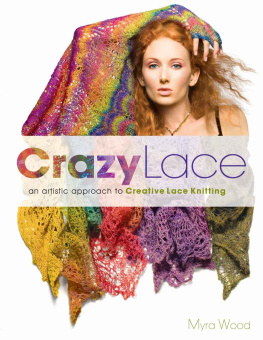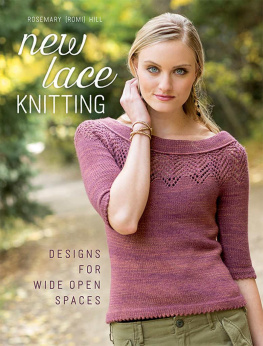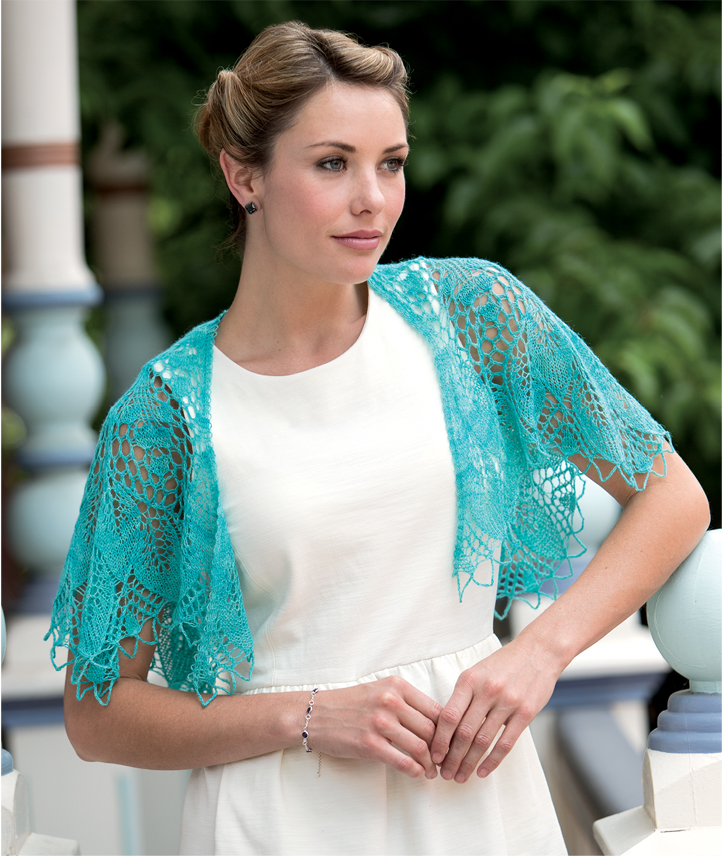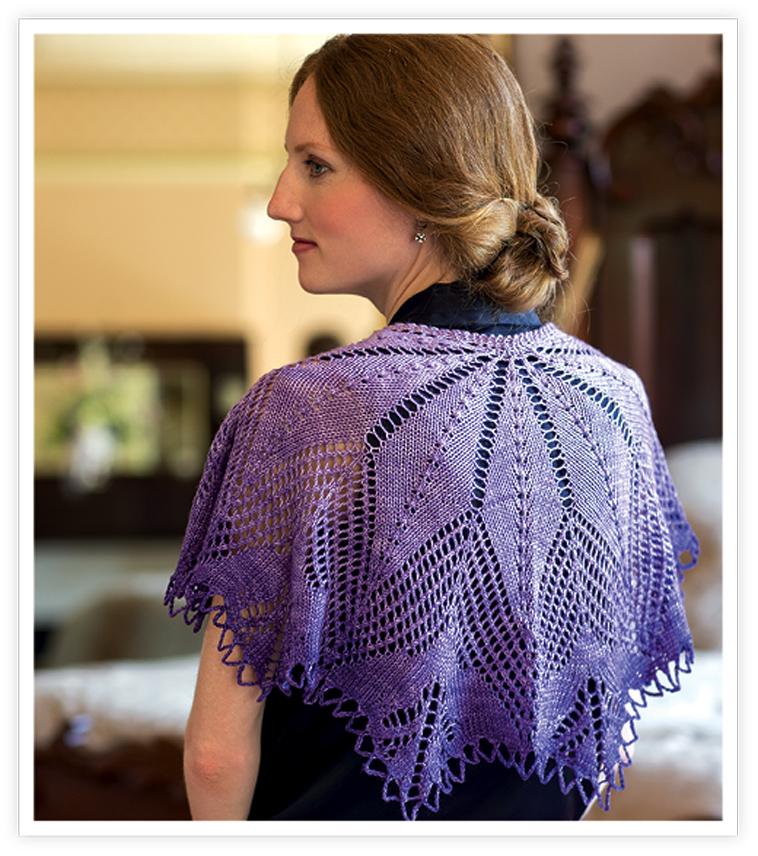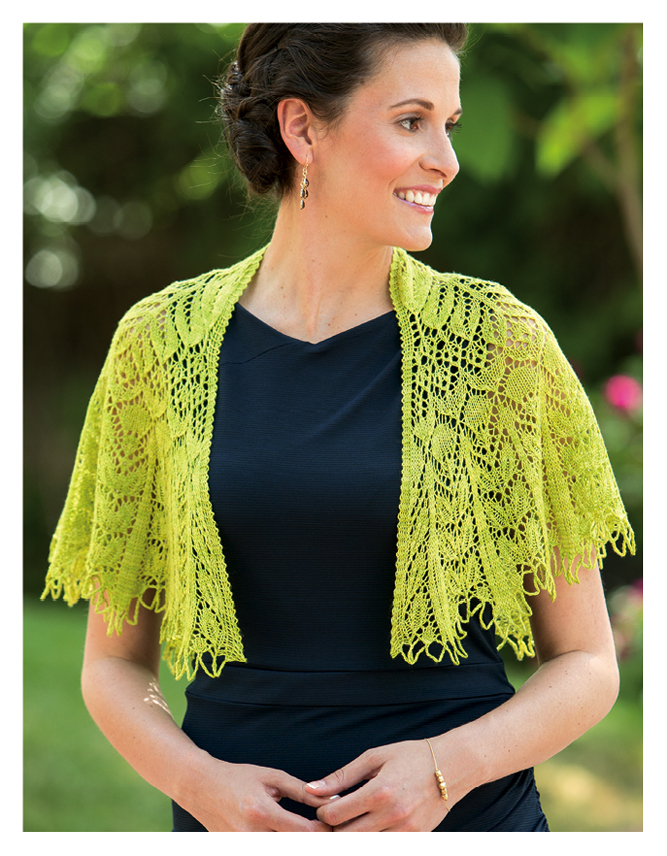New Vintage Lace
Knits Inspired By the Past
Andrea Jurgrau


Contents
Whats Old Is New
This book is about embracing knitting tradition without being bound by it. I cant remember the first time I held knitting needles in my hands, but I do know that my Grandmother Rose taught me to knit and crochet when I was very young. When she was fifteen, she came to America from Eastern Europe with her two younger sisters. As the oldest, she was always the most practical, making useful socks and simple sweaters to keep everyone warm. Her youngest sister, Helen, was the lacemaker. Helen knitted delicate and ornamental sweaters and made intricate doilies. It was her work that always caught my eye.
While in high school, I knitted without patterns, just as my grandmother and great aunts did. Id never seen a real knitting pattern and had no idea there were any rules. Im not sure that much of what I knitted as a child was wearable, but I loved the process. In college, I discovered Elizabeth Zimmermann, and her book Knitting Without Tears (Fireside Books, 1973) became the very first knitting book in my collection. Mary Thomass Knitting Book (Dover, 1972) followed close behind.
As I got older, I began collecting knitting books and pamphlets, mostly ones with content about traditional styles of knitting. Lace quickly became my favorite. For many years, patterns for the most intricate knitted lace doilies were hard to come by. Only if you were very fortunate, might you find some at a church sale or in your grandmothers knitting bag. As the Internet took off, however, it became possible to find vintage patterns at online auctions, provided you had sufficient luck and money.
Fortunately, large collections of what I consider to be the finest knitted lace doily and tablecloth patterns have become available in the past few years, including those by German designers who knitted during the first half of the twentieth century. This style of lace, called kunststricken, translates to art knitting. Herbert Niebling (19051966) is my favorite of these designers. Other lace designers I admire include Marianne Kinzel, Christine Duchrow, and Erich Engeln.

For New Vintage Lace, I set out to reinterpret kunststricken for contemporary appeal. Although I take pleasure in knitting doilies and tablecloths, I wanted the projects in this book to attract a wider audience. Maybe I was simultaneously channeling Grandma Rose and her sister Helen when I started envisioning ways to transform these classic lace motifs into wearable pieces for todays lace knitters. Along with detailed directions, youll also find more general recipes that guide you through turning your own inspirations into a hat, scarf, or shawl thats uniquely yours.
Chapter 1
Materials
For me, knitting is a process. Its as much about the creating as it is about the finished product. With that in mind, selecting materials isnt just about the end result, but about the pleasure that comes from the knitting itself. Along with choosing materials appropriate for the end product, choose materials that youll find pleasurable to work with. Take care in choosing the yarn and beads for each project and youll find enjoyment from cast-on to bind-off!
Yarn
Happily, lots of yarns on the market are ideal for lace knitting. Many are available from small yarn companies and independent dyers. Youll find a selection listed in . Hand-dyed yarns come in an infinite assortment of colors and dye techniques, and I delight in using unique yarns whenever I can. The trick in lace knitting is to find the right combination of yarn and pattern.
Choosing just the right yarn for a lace project is a large part of the fun. Lace yarns are available in a huge range of colors, dye techniques, weights, fiber content, and construction, and youll want to consider all these elements when you make a choice. Each characteristic will contribute to a unique process and end result.
The beauty of knitting lace accessories is that yarn substitutions are relatively easy. Most yarns of similar weight and fiber content will behave the same way as those shown in the projects. Of course, its always a good idea to knit a generous swatch and block it to make sure that the yarn youve chosen will work well with the pattern. Because most of the projects in this book require less than 800 yards (732 meters), they provide the opportunity for you to experiment with yarn and color choices without too big an investment in money or time.
Color
Color is a wonderful thing. It can improve your mood, revive memories, and inspire you. And most of us are quite willing to wear bold colors in a hat, scarf, or shawl that we wouldnt consider for an outfit. For example, you might not be comfortable in a fuchsia dress, but a delicate fuchsia scarf may be just whats needed to complete a look.
When you choose a color, consider both the knitting process and the finished object. I always choose colors that Ill enjoy working with as well as wearing. In general, light colors are easier to see as you knit and they show off lace patterns well; solid colors show off lace patterns better than semisolids and tone-on-tone yarns. However, the latter can produce nice effects when used judiciously.
For the most part, I follow the rule that if the stitch pattern is complicated, the yarn shouldnt be. However, if the values or tones of the colors are close, as in the shawl, and the lace pattern is relatively simple, variegated yarns can add a pleasing visual dimension. If the colors in the yarn are quite different in tone or the values are very different, the yarn may dominate to the point of obscuring the lace pattern.

